Related:
AP changes style to capitalize Black and Indigenous
AP explains why it will not capitalize white
The Associated Press stylebook sets the tone and conventions for news media across the United States and around the world. New editions typically come out in the spring. This year, there are extensive changes in the race-related entries. Here is most of the AP’s email on the changes.
The Bias Busters series generally follows AP style, but capitalizes the terms Black and White in contexts referring to groups of people.
Here are recent new entries in the AP Stylebook:

race-related coverage (new, an umbrella entry pulling together several terms that had been listed separately; adding new terms; adding more detail)
Reporting and writing about issues involving race calls for thoughtful consideration, precise language, and an openness to discussions with others of diverse backgrounds about how to frame coverage or what language is most appropriate, accurate and fair. Avoid broad generalizations and labels; race and ethnicity are one part of a person’s identity. Identifying people by race and reporting on actions that have to do with race often go beyond simple style questions, challenging journalists to think broadly about racial issues before having to make decisions on specific situations and stories.
Some guidelines:
race (revised)
Consider carefully when deciding whether to identify people by race. Often, it is an irrelevant factor and drawing unnecessary attention to someone’s race or ethnicity can be interpreted as bigotry. There are, however, occasions when race is pertinent:
• In stories that involve significant, groundbreaking or historic events, such as being elected U.S. president, being named to the U.S. Supreme Court or other notable occurrences. Barack Obama was the first black U.S. president. Sonia Sotomayor is the first Hispanic justice of the U.S. Supreme Court. Jeremy Lin is the first American-born NBA player of Chinese or Taiwanese descent.
• In cases where suspects or missing persons are being sought, and the descriptions provided are detailed and not solely racial. Police are looking for a man described as white, about 6 feet tall and 200 pounds, with black hair and blue eyes, wearing a plaid shirt and a Seattle Mariners baseball cap. Such descriptions apply for all races. The racial reference should be removed when the individual is apprehended or found.
• When reporting a demonstration, disturbance or other conflict involving race (including verbal conflicts), or issues like civil rights.
In other situations when race is an issue, use news judgment. Include racial or ethnic details only when they are clearly relevant and that relevance is explicit in the story.
Do not use a derogatory term except in rare circumstances — when it is crucial to the story or the understanding of a news event. Flag the contents in an editor’s note.
racist, racism (new)
Racism is a doctrine asserting racial differences in character, intelligence, etc., and the superiority of one race over another, or racial discrimination or feelings of hatred or bigotry toward people of another race.
The terms racism and racist can be used in broad references or in quotations to describe the hatred of a race, or assertion of the superiority of one race over others. The townspeople saw their votes as a rejection of racism.
Deciding whether a specific statement, action, policy, etc., should be termed racist often is not clearcut. Such decisions should include discussion with colleagues and/or others from diverse backgrounds and perspectives. In the AP, that conversation should also include senior managers.
Begin by assessing the facts: Does the statement or action meet the definition of racism? That assessment need not involve examining the motivation of the person who spoke or acted, which is a separate issue that may not be related to how the statement or action itself can be characterized.
In general, avoid using racist or any other label as a noun for a person; it’s far harder to match the complexity of a person to a definition or label than it is a statement or action. Instead, be specific in describing the person’s words or actions. Again, discuss with senior managers, colleagues and others from diverse backgrounds when the description may be appropriate for a person.
Do not use racially charged or similar terms as euphemisms for racist or racism when the latter terms are truly applicable.
Cases in which the term racist might be used include identifying as racist support for avowed racist organizations, statements calling another race or ethnic group inferior, or employing negative stereotypes for different racial or ethnic groups. The video shows the candidate wearing blackface and making racist statements including, “You’re not white so you can’t be right.”
Always use specifics to describe the words or actions in question. But do not use a derogatory term except in rare circumstances when it is crucial to the story or the understanding of a news event.
If racist is not the appropriate term, give careful thought to how best to describe the situation. Alternatives include racially divisive, racially sensitive, or in some cases, simply racial.
racially charged, racially motivated, racially tinged (new)
Generally avoid using these vague phrases to describe situations in which race is or is alleged or perceived to be a central issue, but that do not meet the definition of racist or racism. As alternatives, racially divisive or racially sensitive may be clearer, depending on the context. In some cases, the term racial is appropriate: racial arguments, racial tensions. Always give specifics about what was done, said or alleged.
Do not use racially charged, racially divisive, racially tinged or similar terms as euphemisms for racist or racism when the latter terms are truly applicable. Mississippi has a history of racist lynchings, not a history of racially motivated lynchings. He is charged in the racist massacre of nine people at a black church, not the racially motivated massacre of nine people at a black church.
black(s), white(s) (n.) (new)
Do not use either term as a singular noun. For plurals, phrasing such as black people, white people, black teachers, white students is often preferable when clearly relevant. Black officers account for 47% of the police force and white officers nearly 43%. The gunman targeted black churchgoers. The plural nouns blacks and whites are generally acceptable when clearly relevant and needed for reasons of space or sentence construction. He helped integrate dance halls among blacks, whites, Latinos and Asian Americans. Black and white are acceptable as adjectives when relevant.
black (adj.)
Acceptable as an adjective. African American is acceptable for an American black person of African descent. (Use Negro or colored only in names of organizations or in rare quotations when essential.)
boy, girl
Generally acceptable to describe males or females younger than 18. While it is always inaccurate to call people under 18 men or women and people 18 and older boys or girls, be aware of nuances and unintentional implications. Referring to black males of any age and in any context as boys, for instance, can be perceived as demeaning and call to mind historical language used by some to address black men. Be specific about ages if possible, or refer to black youths, child, teen or similar.
dual heritage (revised)
No hyphen (a change in 2019 from previous style) for terms such as African American, Asian American and Filipino American, used when relevant to refer to an American person’s heritage. The terms are less common when used to describe non-Americans, but may be used when relevant: Turkish German for a German of Turkish descent.
African American (revised)
No hyphen (a change in 2019 for this and other dual heritage terms). Acceptable for an American black person of African descent.
The terms are not necessarily interchangeable. Americans of Caribbean heritage, for example, generally refer to themselves as Caribbean American. Follow a person’s preference.
Asian American (revised)
No hyphen (a change in 2019 for this and other dual heritage terms). Acceptable for an American of Asian descent. When possible, refer to a person’s country of origin or follow the person’s preference. For example: Filipino American or Indian American.
Caucasian (new)
Avoid as a synonym for white, unless in a quotation.
people of color, racial minority (new)
The terms people of color and racial minority/minorities are generally acceptable terms to describe people of races other than white in the United States. Avoid using POC. When talking about just one group, be specific: Chinese Americans or members of the Seminole Indian Tribe of Florida, for example. Be mindful that some Native Americans say the terms people of color and racial minority fall short by not encompassing their sovereign status. Avoid referring to an individual as a minority unless in a quotation.
biracial, multiracial
Acceptable, when clearly relevant, to describe people with more than one racial heritage. Usually more useful when describing large, diverse groups of people than individuals. Avoid mixed-race, which can carry negative connotations, unless a story subject prefers the term. Be specific if possible, and then use biracial for people of two heritages or multiracial for those of two or more on subsequent references if needed. Examples: She has an African American father and a white mother instead of She is biracial. But: The study of biracial people showed a split in support along gender lines. Multiracial can encompass people of any combination of races.
Transracial (new)
The term should not be used to describe people who have adopted a different racial identity.
Chicano
A term that Mexican Americans in the U.S. Southwest sometimes use to describe their heritage. Use only if it is a person’s preference.
Latino, Latina (revised)
Latino is often the preferred noun or adjective for a person from, or whose ancestors were from, a Spanish-speaking land or culture or from Latin America. Latina is the feminine form. Some prefer the recently coined gender-neutral term Latinx, which should be confined to quotations, names of organizations or descriptions of individuals who request it and should be accompanied by a short explanation. Hernandez prefers the gender-neutral term Latinx. For groups of females, use the plural Latinas; for groups of males or of mixed gender, use the plural Latinos. Hispanics is also generally acceptable for those in the U.S. Use a more specific identification when possible, such as Cuban, Puerto Rican, Brazilian or Mexican American.
Hispanic
A person from — or whose ancestors were from — a Spanish-speaking land or culture. Latino, Latina or Latinx are sometimes preferred. Follow the person’s preference. Use a more specific identification when possible, such as Cuban, Puerto Rican or Mexican American.
American Indians, Native Americans (revised)
Both are acceptable terms in general references for those in the U.S. when referring to two or more people of different tribal affiliations. For individuals, use the name of the tribe; if that information is not immediately available, try to obtain it. He is a Navajo commissioner. She is a member of the Nisqually Indian Tribe. He is a citizen of the Cherokee Nation of Oklahoma. Some tribes and tribal nations use member; others use citizen. If in doubt, use citizen. Avoid words such as wampum, warpath, powwow, teepee, brave, squaw, etc., which can be disparaging and offensive. In Alaska, the indigenous groups are collectively known as Alaska Natives.
First Nation is the preferred term for native tribes in Canada.
Indian is used to describe the peoples and cultures of the South Asian nation of India. Do not use the term as a shorthand for American Indians.
tribe (revised)
Refers to a sovereign political entity, communities sharing a common ancestry, culture or language, and a social group of linked families who may be part of an ethnic group. Capitalize the word tribe when part of a formal name of sovereign political entities, or communities sharing a common ancestry, culture or language. Identify tribes by the political identity specified by the tribe, nation or community: the Apache Tribe of Oklahoma, the Cherokee Nation. The term ethnic group is preferred when referring to ethnicity or ethnic violence.
Orient, Oriental
Do not use when referring to East Asian nations and their peoples. Asian is the acceptable term for an inhabitant of those regions.
indigenous
A term used to refer to original inhabitants of a place. Aboriginal leaders welcomed a new era of indigenous relations in Australia. Bolivia’s indigenous peoples represent some 62% of the population.
Aborigine
An outdated term referring to aboriginal people in Australia. It is considered offensive by some and should be avoided.
ghetto, ghettos
Do not use indiscriminately as a synonym for the sections of cities inhabited by minorities or poor people. Ghetto has a connotation that government decree has forced people to live in a certain area.
In most cases, section, district, slum area or quarter is the more accurate word.
reverse discrimination (new)
A term sometimes used to describe bias or perceived bias against majority groups. Limit its use to quotes; generally just discrimination will suffice to describe such allegations or practices.
AP Stylebook Online lets you search for Associated Press style guidelines and add your own local style notes. Site licenses connect multiple users so they can share local style entries. Learn more at https://store.stylebooks.com/apstylebookonline.html.



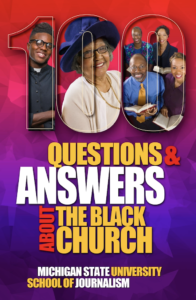
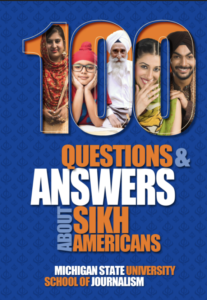

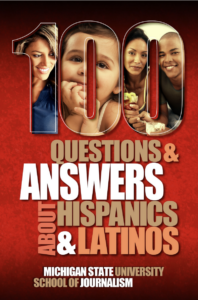


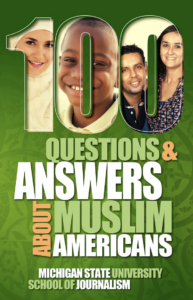

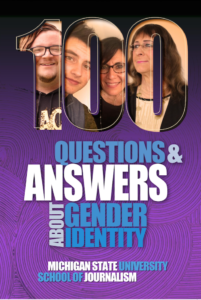
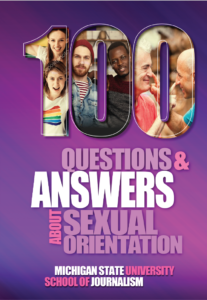







Pingback: Updates to 2019 AP Stylebook – Madison Scott: COMM 3830 Blog
Pingback: Latino vs Latinx -- Which is Politically Correct? | Ongig Blog
how about use of the term ‘minoritized’?